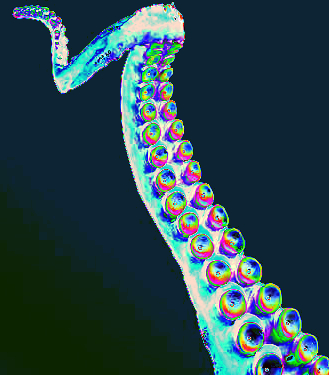Camo-skin pinched from eight-legged illusionists
 A new design has been lifted from Nature’s notebook, this time from the ever-changing skin of the octopus and squid.
A new design has been lifted from Nature’s notebook, this time from the ever-changing skin of the octopus and squid.
An interdisciplinary team has developed a thin, flexible 4-layer material that can camouflages itself to its surroundings by evaluating the background and changing to match.
The system can sense and mimic different patterns in the background within a few seconds.
It is the first system to include the capabilities of sensing and colour-changing in such a compact form.
As with many re-makes though, this skin does not beat the original just yet.
Cephalopod skin has a response time from 250 to 750 milliseconds, and is in vastly better definition that the array of 16 x 16 relatively large, 1 mm square “pixels” on the synthetic version.
The layered material works in a ‘distributed’ way to overcome the challenge of having a material that can both sense and react to its surrounds.
Optical sensors are embedded and distributed across the entire surface, which monitor the surroundings and command independent optical “actuators” to adapt.
The four-layered sandwich design closely mimics the structure of a cephalopod’s skin.
The top layer is an array of “pixels” containing a temperature-based dye which can change between black and transparent at room temperature and 47 °C respectively. This is meant to be the equivalent of the octopus’ chromatophores.
The second layer is a grid of silver particles that form a flat, bright, white background, like the leucophores of the living equivalent.
Below this is a matrix of diodes that heat the pixels above via the thin silver layer. This deviates from the natural counterpart, which uses tiny muscles to excite its chromatophores.
The final layer contains an array of light detectors - like opsins in cephalopods’ skin - which transform surrounding light into electrical impulses.
Results from recent tests have been published in PNAS, while the following video shows the cyber-skin in action.








 Print
Print